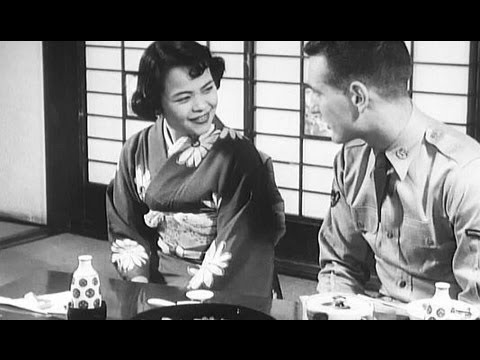Japanese Culture Primer for GIs: “You in Japan” 1957 US Army; The Big Picture TV-354
more at
“A pictorial report of Japan in 1957.” An episode of the US Army produced TV series “The Big Picture,” which appears to have been adapted from an Army training film about Japanese culture for US servicemen stationed in Japan.
Public domain film from the National Archives, slightly cropped to remove uneven edges, with the aspect ratio corrected, and mild video noise reduction applied.
The soundtrack was also processed with volume normalization, noise reduction, clipping reduction, and/or equalization (the resulting sound, though not perfect, is far less noisy than the original).
Japan Listeni/dʒəˈpæn/ (Japanese: 日本 Nihon or Nippon; formally 日本国 Nippon-koku or Nihon-koku, literally the State of Japan) is an island nation in East Asia. Located in the Pacific Ocean, it lies to the east of the Sea of Japan, China, North Korea, South Korea and Russia, stretching from the Sea of Okhotsk in the north to the East China Sea and Taiwan in the south. The characters that make up Japan’s name mean “sun-origin”, which is why Japan is sometimes referred to as the “Land of the Rising Sun”.
Japan is an archipelago of 6,852 islands. The four largest islands are Honshu, Hokkaido, Kyushu and Shikoku, together comprising about ninety-seven percent of Japan’s land area. Japan has the world’s tenth-largest population, with over 127 million people. Honshū’s Greater Tokyo Area, which includes the de facto capital city of Tokyo and several surrounding prefectures, is the largest metropolitan area in the world, with over 30 million residents.
Archaeological research indicates that people lived in Japan as early as the Upper Paleolithic period. The first written mention of Japan is in Chinese history texts from the 1st century AD. Influence from other nations followed by long periods of isolation has characterized Japan’s history. In the late 19th and early 20th centuries, victory in the First Sino-Japanese War, the Russo-Japanese War and World War I allowed Japan to expand its empire during a period of increasing militarism. The Second Sino-Japanese War of 1937 expanded into part of World War II in 1941, which came to an end in 1945 following the atomic bombings of Hiroshima and Nagasaki. Since adopting its revised constitution in 1947, Japan has maintained a unitary constitutional monarchy with an emperor and an elected legislature called the Diet.
A major economic power, Japan has the world’s third-largest economy by nominal GDP and fourth-largest economy by purchasing power parity. It is also the world’s fourth-largest exporter and fourth-largest importer. Although Japan has officially renounced its right to declare war, it maintains a modern military with the sixth largest military budget, used for self-defense and peacekeeping roles. After Singapore, Japan has the lowest homicide rate (including attempted homicide) in the world. According to Japan’s health ministry, Japanese women have the second highest life expectancy of any country in the world…
Japanese culture has evolved greatly from its origins. Contemporary culture combines influences from Asia, Europe and North America. Traditional Japanese arts include crafts such as ceramics, textiles, lacquerware, swords and dolls; performances of bunraku, kabuki, noh, dance, and rakugo; and other practices, the tea ceremony, ikebana, martial arts, calligraphy, origami, onsen, Geisha and games. Japan has a developed system for the protection and promotion of both tangible and intangible Cultural Properties and National Treasures. Sixteen sites have been inscribed on the UNESCO World Heritage List, twelve of which are of cultural significance…
Japanese cuisine is based on combining staple foods, typically Japanese rice or noodles, with a soup and okazu — dishes made from fish, vegetable, tofu and the like — to add flavor to the staple food. In the early modern era ingredients such as red meats that had previously not been widely used in Japan were introduced. Japanese cuisine is known for its emphasis on seasonality of food, quality of ingredients and presentation. Japanese cuisine offers a vast array of regional specialties that use traditional recipes and local ingredients. The Michelin Guide has awarded Japanese cities more Michelin stars than the rest of the world combined…

